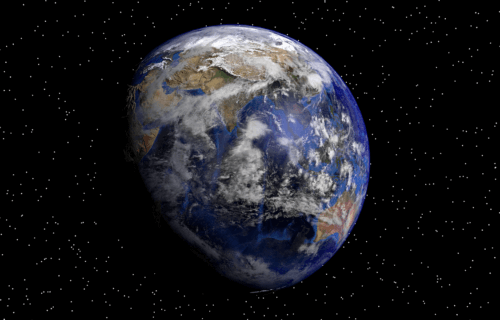BIRMINGHAM, United Kingdom — Can humans live on another planet besides Earth? An international team of scientists has developed an innovative approach to identifying habitable and potentially already inhabited worlds. It all comes down to finding those planets which have liquid just like ours.
This method focuses on comparing the carbon dioxide (CO2) levels in the atmospheres of exoplanets with those of their neighbors. The team’s research hinges on the discovery that a planet with lower levels of atmospheric CO2 compared to neighboring planets could indicate the presence of liquid water on its surface. This decrease in CO2 suggests that the gas is being absorbed into oceans or utilized by life forms on the planet.
Habitability, in astronomical terms, refers to a celestial body’s ability to host and maintain liquid water on its surface. Planets too close to their stars are too hot, and those too far are too cold. Planets within the habitable zone (or “Goldilocks zone”) are considered just right for supporting liquid water — and potentially organic life. However, until now, confirming the presence of liquid water on these planets has been a challenge.
The new “habitability signature” developed by researchers from the University of Birmingham in the U.K. and the Massachusetts Institute of Technology could change that. Previous attempts to detect liquid water on exoplanets relied on observing the reflection of starlight off water surfaces, a method too faint for current observatories. The new technique, in contrast, can be applied with existing facilities.
“It is fairly easy to measure the amount of carbon dioxide in a planet’s atmosphere. This is because CO2 is a strong absorber in the infrared, the same property causing the current rise in global temperatures here on Earth. By comparing the amount of CO2 in different planets’ atmospheres, we can use this new habitability signature to identify those planets with oceans, which make them more likely to be able to support life,” says study co-author Amaury Triaud, a professor of exoplanetology at the University of Birmingham, in a university release.
“For example, we know that initially, the Earth’s atmosphere used to be mostly CO2, but then the carbon dissolved into the ocean and made the planet able to support life for the last four billion years or so.”

This method not only aids in identifying habitable planets but also offers insights into environmental tipping points and the climate crisis on Earth. It can help scientists understand at what point carbon levels render a planet uninhabitable, as seen in the case of Venus and Earth, which have similar structures but vastly different atmospheric compositions.
Additionally, this approach could serve as a biosignature, since life forms consume carbon dioxide.
“Life on Earth accounts for 20 percent of the total amount of captured CO2, with the rest mainly being absorbed by the oceans. On another planet, this number could be much larger,” explains study co-author Dr. Julien de Wit, assistant professor of planetary sciences at MIT. “One of the tell-tale signs of carbon consumption by biology, is the emission of oxygen. Oxygen can transform into ozone, and it turns out ozone has a detectable signature right next to CO2. So, observing both carbon dioxide and ozone at once can inform us about habitability, but also about the presence of life on that planet.”
Importantly, the signatures of CO2 and ozone are detectable with current telescopes, bringing new hope to the search for extraterrestrial life. Contrary to previous beliefs that major telescopes like NASA’s James Webb Space Telescope wouldn’t be capable of detecting life on exoplanets, this method provides a viable path to not only infer the presence of liquid water but also to potentially identify life itself on distant planets.
The research team’s next objective is to measure the atmospheric CO2 compositions of a range of exoplanets to determine which ones might have oceans and are thus more likely to support life. This breakthrough could significantly impact how we prioritize and conduct observations of exoplanets in the quest to find habitable worlds beyond our solar system.
The study is published in the journal Nature Astronomy.
You might also be interested in:
- Water everywhere! Chances of finding planets with liquid water just got 100 times better
- Out of this world! Sounds from other planets created using cutting-edge software
- Alien life nearby? 2 Earth-like planets discovered in habitable zone just 16 light years away


This application of transporting images will require the invention of the Universal-Time’,Degree’,Code’,Key’, Clock’ and Calendar’ as it relates to
Space’/Place’=Pace’/Face’=FLOW
With this logic, I teleported the sun directly into my eyes, or I performed a Holdo Maneuver with the sun on my eyes with my mirror.